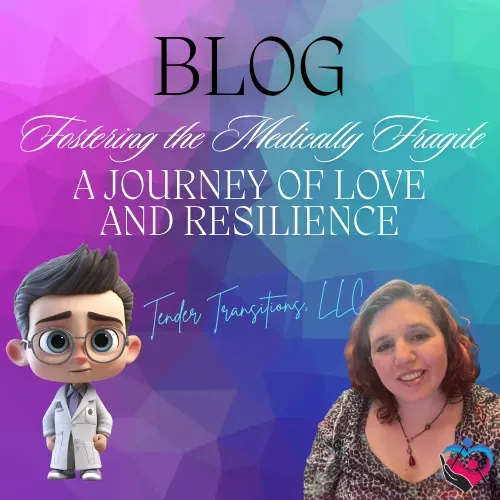How Do I Become a Foster Parent? A Step-by-Step Guide
Becoming a foster parent is a profound and impactful decision. It involves opening your home and heart to children who are in need of care, stability, and love. The process of becoming a foster parent can seem complex, but understanding the steps involved can help demystify the journey and guide you through the process. In this blog post, we'll walk you through the essential steps to becoming a foster parent and offer insights into what you can expect along the way.
1. Understanding Foster Care
Before you embark on the journey to become a foster parent, it's crucial to understand what foster care entails. Foster care is a temporary arrangement designed to provide a safe and nurturing environment for children who cannot live with their biological families. The goal is to reunite children with their families when possible, but sometimes adoption or other long-term placements become the best option.
Foster parenting requires a deep commitment to supporting children who may have experienced trauma, instability, or neglect. It involves being a stable presence in their lives, meeting their physical and emotional needs, and working closely with social workers and other professionals.
2. Research and Preparation
The first step in becoming a foster parent is to research and prepare. This involves a number of things.
Learning About the Foster Care System:
Educate yourself about the foster care system, including its goals, processes, and the types of children who come into foster care. Understanding the system will help you make an informed decision about whether foster parenting is right for you.
Assessing Your Readiness:
Reflect on your personal circumstances, including your family dynamics, financial stability, and emotional readiness. Foster parenting requires time, patience, and resilience, so it's important to assess whether you are prepared to take on these responsibilities.
Connecting with Agencies:
Reach out to local foster care agencies or child welfare organizations to learn about their requirements and processes. These agencies can provide you with information about the application process, training, and support available to foster parents.
3. Completing the Application Process
Once you've decided to move forward, you'll need to complete the application process. This typically involves several of the following steps.
Submitting an Application:
Fill out an application form provided by your local foster care agency. This form will ask for information about your background, family, and reasons for wanting to become a foster parent.
Undergoing Background Checks:
All prospective foster parents must undergo criminal background checks and child abuse clearances. These checks are conducted to ensure that you do not have any history that would make you unsuitable to care for children.
Participating in a Home Study:
A home study is a comprehensive assessment conducted by a social worker or caseworker. It involves interviews, home inspections, and assessments of your family dynamics. The purpose of the home study is to evaluate your suitability as a foster parent and ensure that your home is safe and appropriate for children.
4. Completing Training
Training is a critical component of becoming a foster parent. Most agencies require prospective foster parents to complete pre-service training, which covers various aspects of foster care.
Child Development:
Understanding the developmental stages and needs of children, including how trauma and neglect can impact their behavior and well-being.
Trauma-Informed Care:
Learning strategies for supporting children who have experienced trauma and creating a nurturing environment that promotes healing.
Behavior Management:
Techniques for managing challenging behaviors and promoting positive behavior in children.
Legal and Administrative Aspects:
Information about the legal aspects of foster care, including your rights and responsibilities as a foster parent, and how to navigate the foster care system.
5. Preparing Your Home
Before a child is placed in your home, you'll need to ensure that your home meets the safety and comfort requirements set by the agency.
Safety Measures:
Install safety features such as smoke detectors, childproof locks, and first-aid kits. Ensure that your home is free from hazards and that there is a designated space for the child.
Creating a Welcoming Space:
Prepare a comfortable and welcoming space for the child, including a bedroom and personal belongings. This helps the child feel secure and valued.
Stocking Essential Supplies:
Make sure you have essential supplies on hand, including clothing, toiletries, and school supplies.
6. Being Matched with a Child
Once your application is approved and your training is complete, you'll be ready to be matched with a child. The matching process involves several steps.
Assessment of Needs:
The agency will assess the needs of children currently in the system and match them with foster parents who can best meet those needs.
Placement:
When a match is found, the agency will arrange for the child to be placed in your home. You'll receive information about the child's background, needs, and any special considerations.
Ongoing Support:
After placement, you'll continue to receive support from the agency, including regular visits from caseworkers, access to resources, and opportunities for additional training.
7. Building a Support Network
Foster parenting can be challenging, and having a strong support network is essential. There are a few things to consider.
Connecting with Other Foster Parents:
Joining foster parent support groups or networks can provide valuable insights, encouragement, and camaraderie.
Seeking Professional Support:
Accessing counseling or support services for yourself and the child can help address any emotional or behavioral issues that arise.
Conclusion
Becoming a foster parent is a deeply rewarding experience that requires dedication, compassion, and a willingness to support children in need. By understanding the process, completing the necessary steps, and preparing your home and family, you can embark on this journey with confidence. The impact you make as a foster parent can change a child's life and provide them with the stability and care they need to thrive. If you're ready to make a difference, take the first step today and explore the opportunities to become a foster parent.

